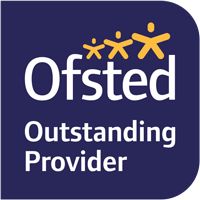Curriculum Subject Overview
Subject: Phonics
Intent:
At Bramley Park Academy our learning is built for purpose. Phonics is an integral skill for early reading and that’s why it is linked across our whole curriculum and school. Our reading and spelling is interlinked and then made explicit in our Literacy lessons to ensure children are using their reading to support their writing. In order to provide a consistent approach of segmenting (writing) and blending (reading), we use the Letters and Sounds framework throughout FS 1/2 and KS1. We also use this to further support children in KS2.
- Allows children to BELIEVE in their ability to learn to read and PERSERVE in each phonics session through fun and exciting games and activities.
- A whole school love of reading is instilled in all that we do so that phonics becomes a purposeful and integral part of learning.
- Provides children with the understanding that phonics is an important part of our daily lives and that reading is paramount for being a successful learner.
- Cross –curricular links to phonics means that it is built into every part of the early learners day and wider opportunities give children time to access phonics independently too.
- Engages all children and entitles them to the same quality of teaching and learning opportunities, striving to ACHIEVE their potential, as they belong to our school community.
- Is in line with expectations of the National Curriculum 2014.
Implementation:
- We use the Letters and Sounds framework to allow teachers to teach and assess in sequence with one another and create groups that stream across the year group.
- What our phonics sessions include
- In our phonics lessons, teachers use AFL to drive standards and attainment for all children. Using Letters and Sounds means that teachers are given every opportunity to teach to the needs of the children in that moment and challenge misconceptions. It also means they are setting high expectations that underpins the whole curriculum – for example challenging children’s spelling and handwriting.
- Teaching sequence
- Revisit and Review
- We use flashcards to begin every session so that our children are confident with previously taught sounds to use in their writing. Each flashcard helps the children to memorise the sound through repetition. This part of the session is also based on the teacher’s live assessment of the children and what they need in the moment, making it fit for purpose. This is a quick and pacey way to assess children’s knowledge of sounds.
- Teaching the new sound
- When teaching a new sound, children will say the sound, blend a word with the sound in and then speed read the words. Teachers ensure they are using clear sound discrimination and pronunciation of the sound. This shows children’s ability to orally identify where they can hear the sound and the words you hear it in.
- Practice
- Repetition supports children’s ability to embed and develop a clear understanding of reading the words with the specific sound.
At Bramley Park Academy, we use a mixed method approach of independent, paired and some whole class practising. This includes writing a sentence with the new sound in or reading a sentence/part of a text with the new sound in. These routines help to build a deeper understanding of the sounds the children are learning and apply it across the curriculum.
Context
Children are taught how to use the sounds they have learnt in context. Children can show understanding in a variety of ways, for example writing their own sentence using the sound or spotting the sound across our curriculum. This helps to embed our phonics sessions in every aspect of the day.
Spelling
In the last 5 – 10 minutes of the session, pupils go on to practice spelling by sounding out the words they are told to spell by their teacher, following the spelling and editing routine. This routine is designed to enable children to hear and identify the correct number of phonemes (sounds) in words and encode them by selecting the corresponding (correct) graphemes. This part of the session means children are given opportunity to practise their pencil control and handwriting, whilst learning how to spell.
In our 30 minute phonics sessions at Bramley Park Academy, you will always see these teaching steps:
Revisit/review (5 minutes)
Teach (5-10 minutes)
Practise (10 minutes)
Spelling (5-10 minutes)
Impact:
There is a clear buzz and love of reading at Bramley Park Academy. It is woven into every part of the day and this shows in the impact of children’s interest and desire to read. This in turn impacts data and the higher implementation of home reading, independent reading and teacher-led reading activities. Phonics is purposeful and integral to the ability to read and is recognised as that by children and staff every day.
- The children believe that can ACHIEVE and staff in turn have high expectations for all children.
- Consistency throughout Early Years and KS1 means clear teaching structure, embedded practises for children and teachers and a high level of engagement.
- A high incline in data for children passing the Phonics Screening Check each year since 2017.
- Teachers who feel confident in teaching, delivering and assessing phonics and can share good practise.
During our Reading Peer Review, these were the impacts noted:
- Effectively implementing a systematic phonics programme.
- Clear routines established with the children self-regulating and phonics happening every day.
- Engagement with the phonics by children is high.
- Phonics screening is sophisticated and the teaching matches the need.
- In Year 2, there is a move to amalgamate the teaching of phonics with the wider curriculum.
Data
- Children achieving the expected standard in The Phonics Screening Check for 2019 was 92%. An increase of 13% from the previous year’s 74% and an even larger increase from 2017’s percentage pass rate of 46%.
2019 year 1 Phonics Screening Check

2018 year 1 Phonics Screening Check


